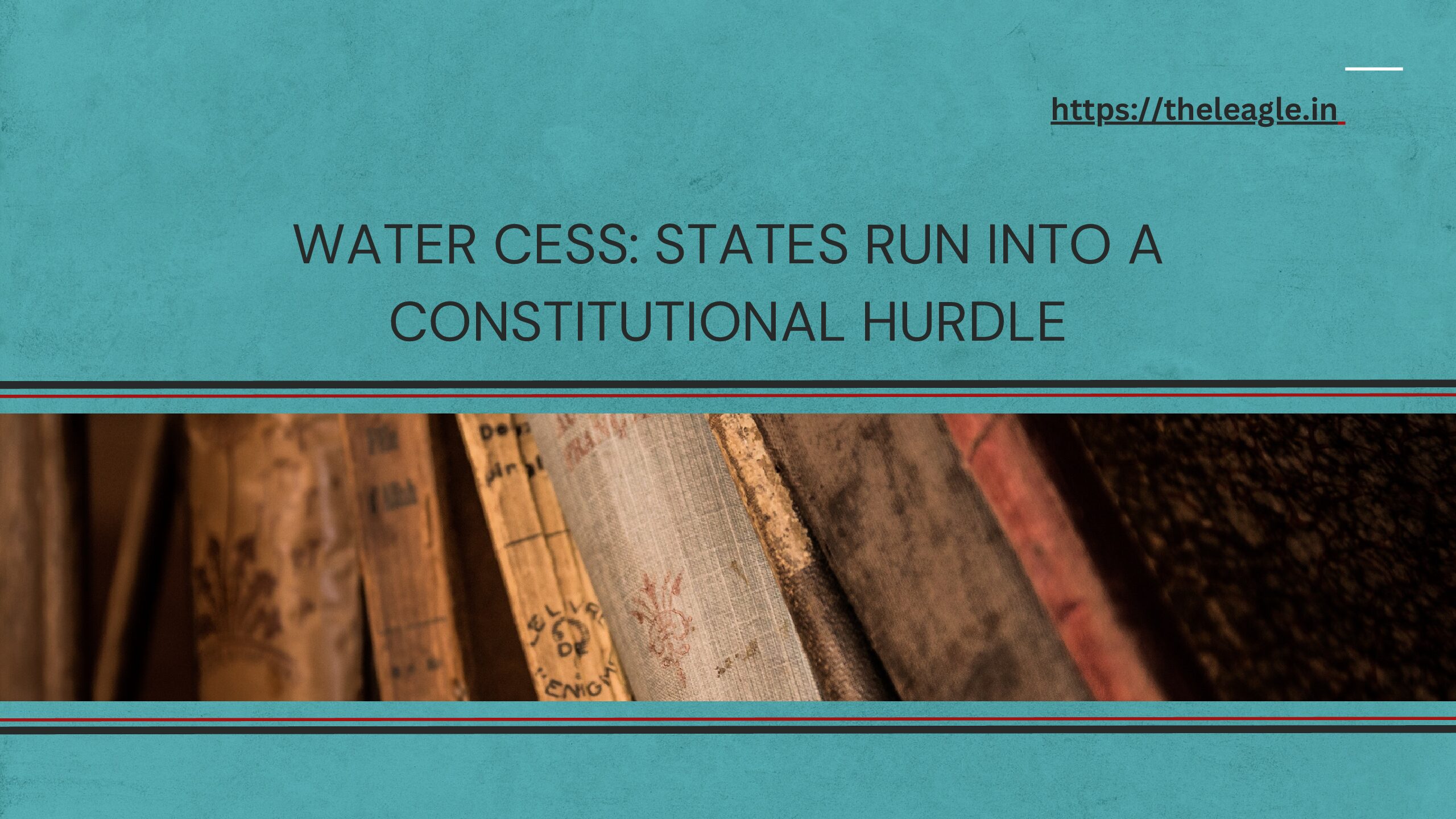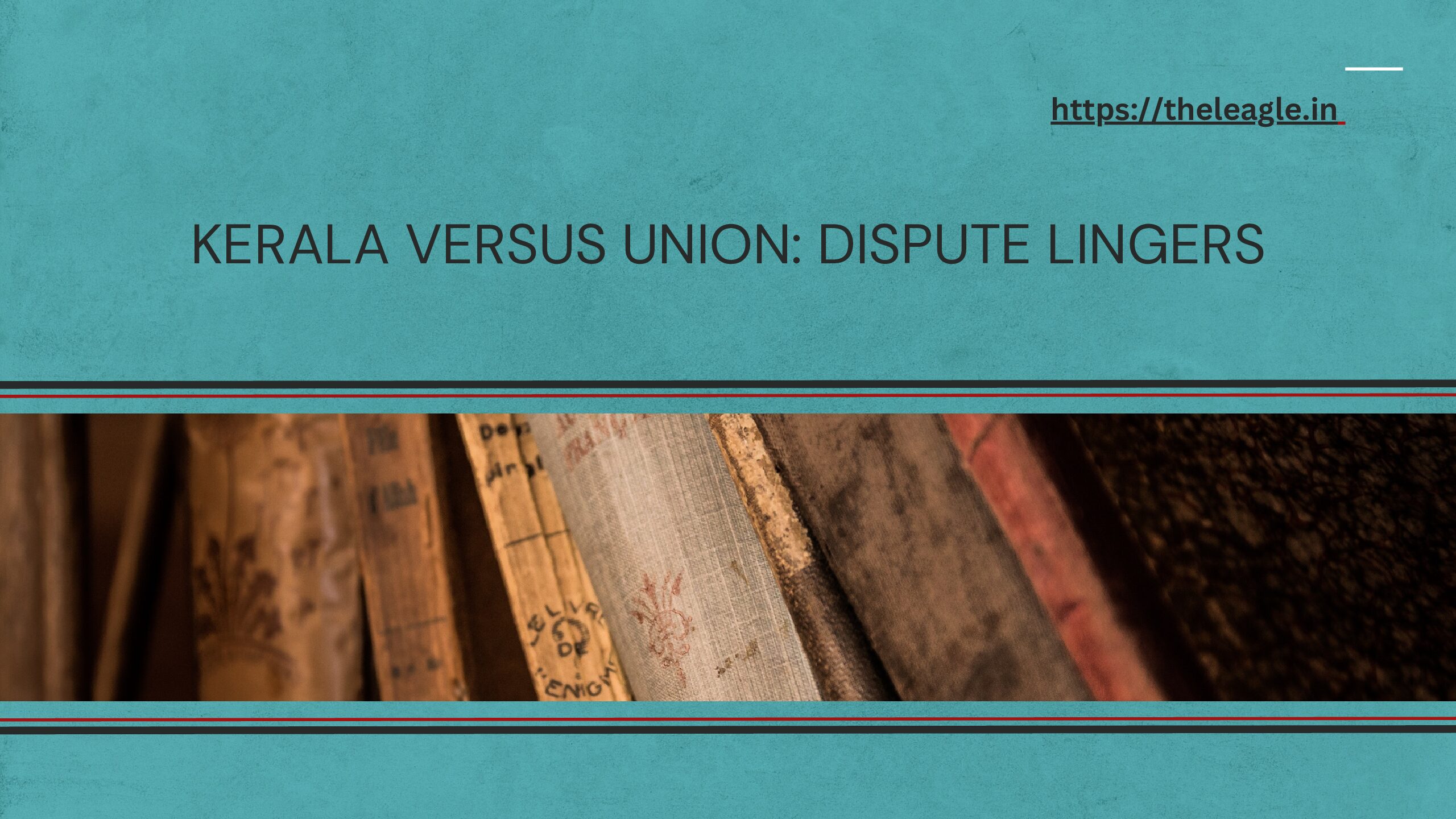Two States – Himachal Pradesh and Uttarakhand – in their attempts to generate additional sources of revenue have run into constitutional hurdles. Both States attempted to levy a ‘water cess’, a tax on use of water by power generation companies but the Courts declared the same as unconstitutional. Both the Himachal Pradesh High Court and the Uttarakhand High Court have declared the respective levies of both States as unconstitutional. The High Courts of both States held that while the States are terming the levy as a water cess/tax, it was in effect a tax on electricity and States do not have the power to levy tax on electricity. In this article, I focus on the nature of tax, State’s competence, and the possible ramifications of the judgments on State’s efforts to generate additional sources of revenue.
Cess on ‘Drawl of Water’ or ‘Generation of Electricity’
Both the legislations – of Himachal Pradesh and Uttarakhand – levied tax on drawl of water of generation of electricity. The Himachal Pradesh Water Cess on Hydropower Generation Act, 2023 (‘Act of 2023’)in the Statement of Objects and Reasons stated that the water cess on hydropower generation will be imposed on consumption of water and head available in the project, which is the difference in levy at entry and exit of water conductor system. The Himachal Pradesh High Court referred to the relevant provisions of the Act of 2023 and observed that it was clear that water cess was not on ‘water’ but on ‘water drawn for hydropower generation’. And since there is no generation of electricity without drawl of water, in the absence of generation of electricity no water cess is imposed.
The Himachal Pradesh High Court also referred to the Notification issued under the Act of 2023 wherein the tax rates were determined by considering the head-height and not the quantum of water. The greater the height from which water falls on the turbine, greater the momentum resulting in electromagnetic field causing generation of electricity meant, as per the High Court, that the tax was on user of water, but user of water for generation of electricity. The High Court added that it was clear that if tax was on quantum of water, then height from which the water fell would be irrelevant and that:
The “use of water” in fact does not go by the text of the impugned Act. It is “generation of electricity” that is the “bone” and “water drawn” is only the “flesh”. The taxable event is “hydropower generation” and not the “usage of water” because if there is no generation, there is no “tax”. Moreover, if the cess was on “usage of water”, then how could the height, at which the water falls on the turbine, be made the taxable event? (para 41)
The Himachal Pradesh High Court was clear that the nature and character of water cess was such that it was inextricable with electricity generation, and it was a misnomer that the tax was levied on water and not on generation of electricity. (para 42)
The Uttarakhand High Court made similar observations vis-à-vis the Uttarakhand Water Tax on Electricity Generation Act, 2012 and observed that the user for the purpose of water tax was not a person who draws water, but a person who draws water for the purpose of generation of electricity. And further the measure of tax was not the volume of water used, but the units of electricity generated which was evident from the fact that for different heights different tax rates were prescribed. The High Court observed:
The measure of tax definitely is as per cubic meter water used but it depends on the height available for power generation. Higher the height, more is the tax per cubic meter water. Had it been tax on mere drawal of water, there would have been no necessity to correspond the use of water with the height available for power generation. (para 178)
The measure of the tax, the Uttarakhand High Court concluded was on generation of electricity, thus the tax was in pith and substance a tax on generation of electricity and not on use of water. (para 179)
The Himachal Pradesh High Court and the Uttarakhand High Court, correctly understood the nature of tax. Both the High Courts correctly adopted the approach of looking at the substance of the levy, and were not guided by its nomenclature alone. In doing so, they were able to correctly identify the nature of levy and concluded that it was not on use of water, as claimed by States, but on its use for generation of electricity.
State’s Competence
States tried to justify their competence to levy the impugned water cess/water tax by relying on and referring to various legislative entries of the Seventh Schedule. Some of the legislative entries of List II, that were referred to were: Entry 49 which provides for ‘Taxes on lands and buildings’, Entry 50 which provides for ‘Taxes on mineral rights subject to any limitations imposed by Parliament by law relating to mineral development’, Entry 45 which provides ‘Land revenue, including the assessment and collection of revenue, the maintenance of land records, survey for revenue purposes and records of rights and alienation of revenues’, Entry 17 which states ‘Water, that is to say, water supplies, irrigation and canals, drainage and embankments, water storage and water power subject to the provisions of entry 56 of List I as well as Entry 18 which provides for ‘Land, that is to say, right in or over land, ..’
While the High Court spend considerable space in interpreting each of the legislative entries, there are three broad points worth mentioning: first, water cess/ tax could not be justified by States by relying on Entry 17 or entry 18 since these are general legislative entries and taxes can be levied by States or the Union only by referring to tax legislative entries; second, water cess/tax could not justified as a tax on minerals, because while States argued that water is a mineral as held in Ichapur case, the Court’s observation in Ichapur was in the specific context of Petroleum & Mineral Pipelines (Acquisition of Right of User in Land) Act, 1962 and could not be applied in the impugned case; and third, the High Courts refused to interpret the water cess/tax as a tax on land despite State’s assertion that water flows on land, and land includes water and air because the High Courts refused to give an unusually wide interpretation to the term land and also High Courts were not convinced that there is a proximate relation between the water cess/tax and the land. The Uttarakhand High Court summarized its observations on the issues as:
Now, this Court has held that in the instant case, the water drawn from the source though falls on generator attached to land, but it is not use of water on land and it is also not land revenue for the simple reason because it is not only fall of water on land, but it is use of water for electricity generation that makes a taxable event. The pith and substance of the Act is water tax for generation of electricity. Therefore, the State Legislature is not competent to levy the tax under E 45 and 49 L II of S VII. (para 181)
The States were on the backfoot in their attempt to justify that the water cess/tax was within their legislative competence. And the drafting of statutory provisions and Notifications for tax rates, left little doubt that the tax was on generation of electricity, but the nomenclature used was that of a water tax. Equally weak was the State’s attempt to justify water as part of land. Finally, it is worth pointing out that the High Courts did not give enough credence to financial necessity of States to adjudicate a constitutional issue and correctly so as the need for additional sources of revenue cannot triumph Constitutional limits.
Revenue Ramifications for States
The revenue ramifications of States not being able to levy water cess are likely to be multiple. The obvious one is that States with rich water resources will not be able to use these water resources for generating additional revenue, at least for now. The Statement of Objects and Reasons of The Himachal Pradesh Water Cess on Hydropower Generation Act, 2023 clearly stated that the State of Himachal Pradesh has limited revenue generation resources, it faces financial constraints and the immense water resources can be used as a useful source for revenue generation. Similar reasons can be assigned to the State of Uttarakhand, in fact, the levy of water by the latter was one of the reasons cited by the State of Himachal Pradesh to levy its water cess. But, as I mentioned above, these reasons cannot inform interpretation of the Constitution, even if Constitutional constraints lead to revenue squeeze for States.
Successive Finance Commissions in their awards have enjoined States to explore additional revenue sources. While the recommendations of the Finance Commissions are well meaning, there are major hurdles for States to explore additional sources of revenue. To begin with, the distribution of tax bases under the Constitution is such that the taxes with greater buoyancy and wider bases have been allocated to the Union. And since 2017, relatively lucrative indirect taxes in State’s domain have been subsumed under GST. To the extent, States are being innovative such as by levying water cess, they are testing and also understanding the limits of their competence. While in the impugned cases, Courts have rightly not upheld the water cess, it will take equally innovative and proactive measures from various States to further test their taxation powers in their attempts to be able to finance themselves and not become increasingly dependent on the Union for their finances.
Conclusion
Both the judgments discussed above rely on a wide set of judicial precedents to determine the scope of each of the legislative entries that States used to justify their legislative competence. The High Courts correctly identified the nature of levy and its substance and relied on the relevant statutory provisions and Notifications to hold the levy as unconstitutional. Of course, the States can redraft the legislations in constitutionally compatible manner since resource crunch is a recurring issue. The thing worth seeing would be if States modify the way they wish to levy water cess/tax or will they now focus their efforts at trying to find other sources of revenue.

